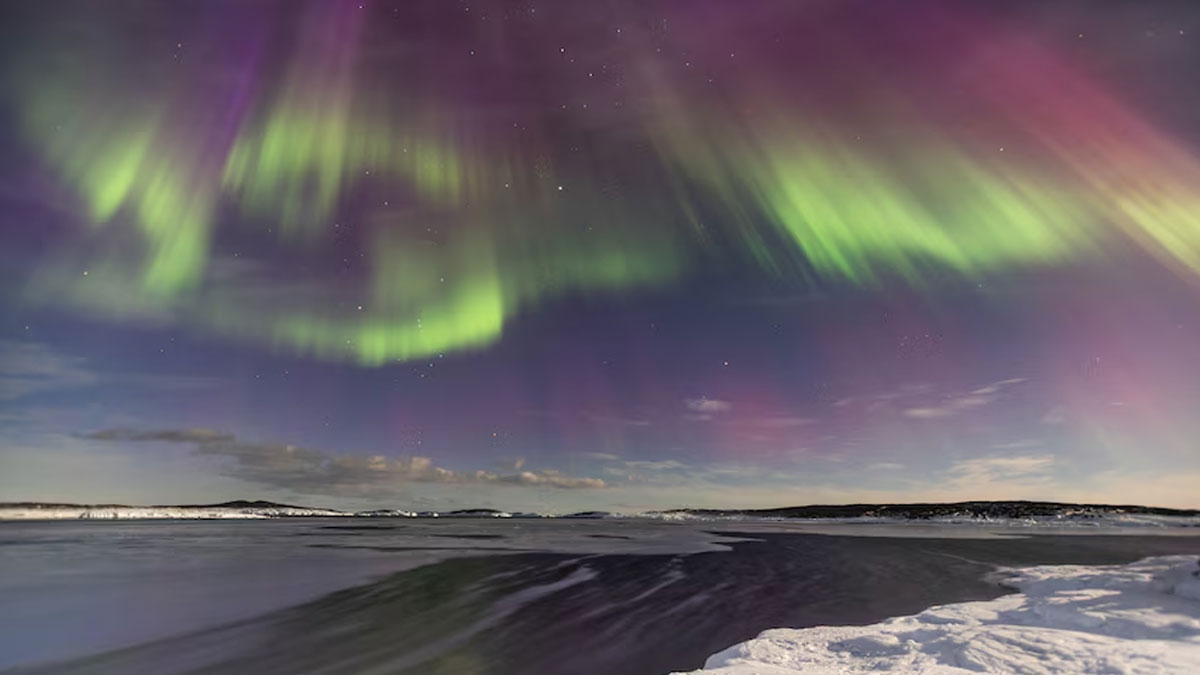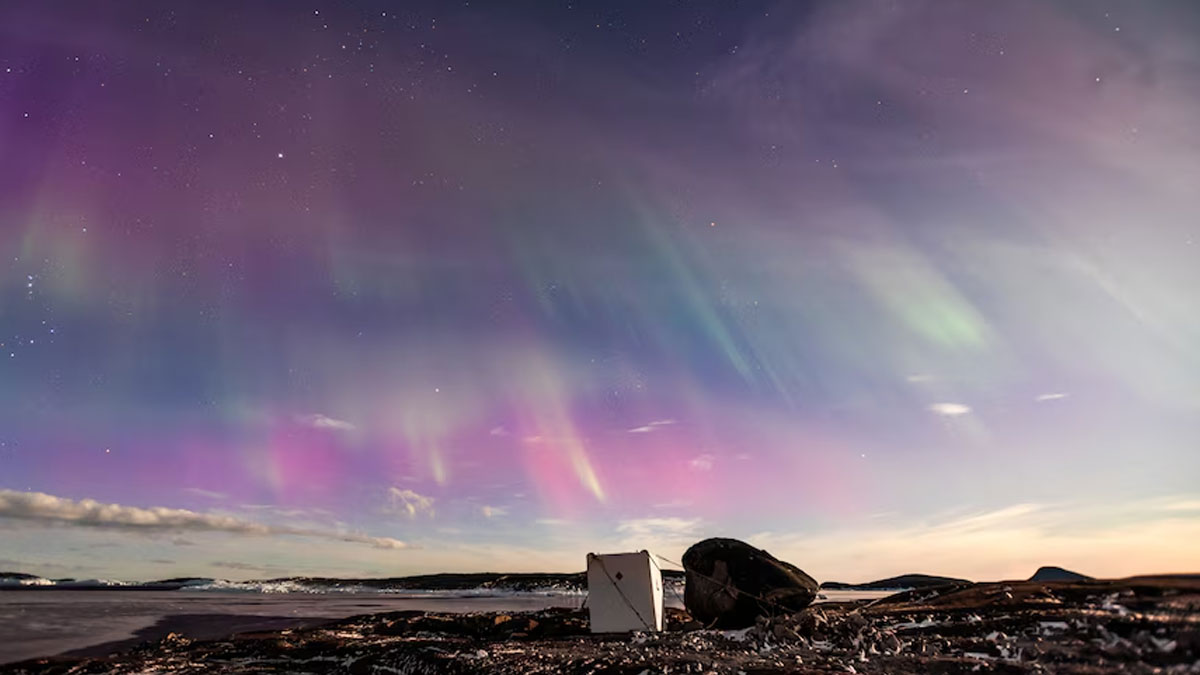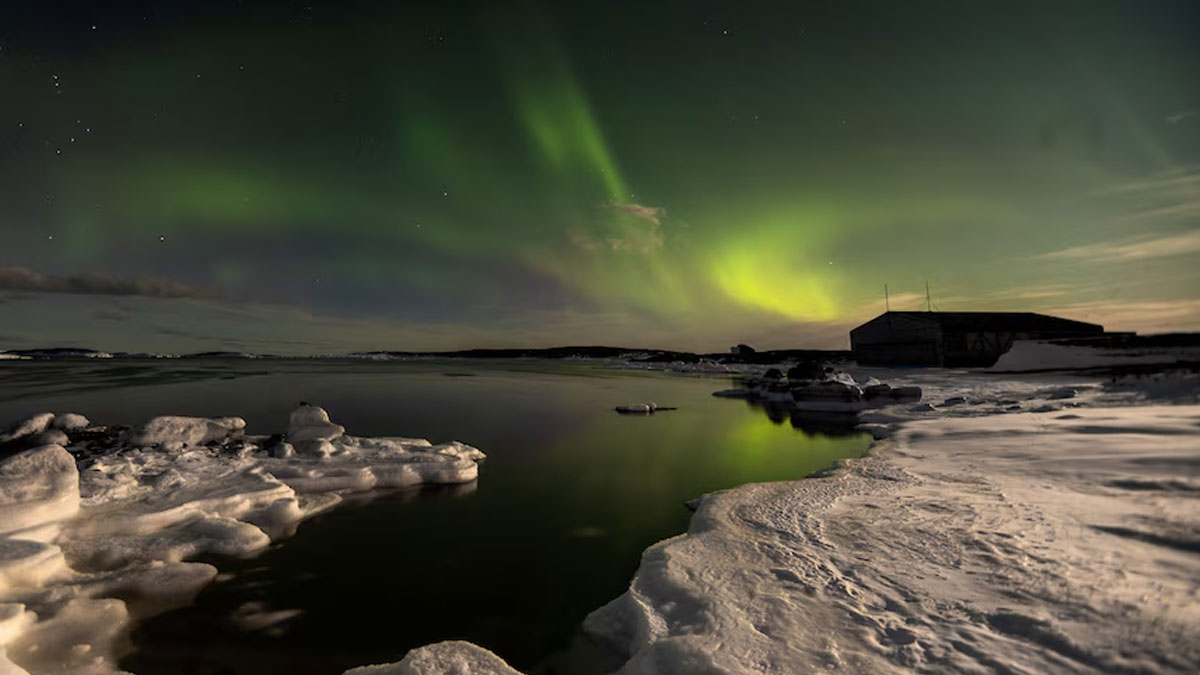
Justin Chambers has been chasing the aurora australis for over a decade, and he's now in one of the best places in the world to find them.
The chef turned amateur photographer spends a large part of his year at Mawson Station, in the Australian Antarctic Territory.
As the sun enters the solar maximum — the period of greatest solar activity during its 11-year solar cycle — Mr Chambers said he has witnessed the best aurora of his life, and managed to get it on camera.
"Having chased them for so long, I find the beauty in everything, but seeing these … I've never experienced anything quite like it," he said.
"Colours I've only dreamed of.
"I've never really seen pink, I've seen red and green, there was a hint of blue, we had purples and we had oranges."
What causes an aurora in the first place?
Auroras occur in the earth's atmosphere when oxygen atoms and nitrogen molecules interact with charged particles from the sun.
Some of those particles can get trapped in earth's magnetic field and are sent towards its northern and southern poles.
When they collide with gases in the earth's atmosphere, the energy is released as light.
But even if an aurora is likely to occur, there's no guarantee it will be visible to the naked eye.
The human eye needs darkness to see the colours of the southern lights — and even then, a camera is often needed to bring out the colour.
Finding the unique in the commonplace
With its dramatic weather and endless ice, the Antarctic is a photogenic place, and auroras occur frequently.
"Every single night that I am outside, I will see an aurora or a hint of an aurora," Mr Chambers said.
"It's geomagnetic activity, it's the sun's radiation constantly streaming into the north and the south pole.
"It's happening now, we just can't see it.
"So, for me, it's about finding the uniqueness in this unique place," Mr Chambers said.
Solar events can interfere with communication equipment at the Antarctic base and crews are constantly monitoring for any indication a powerful event will occur.
However, like predicting any weather, forecasts can be inaccurate.
Mr Chambers said he was told by the Mawson crew there was something coming.
"This was a big one," he said.
But initially, he thought he'd missed it.
"I'm quickly busying myself getting all the camera gear ready, I run outside, and it's gone," he said.
"It was one streak, this ribbon, you know, that stretched across the sky, that was flapping like a flag in the breeze."
"I went down to the water's edge thinking, well, this is what I want. And I looked up and there was nothing. I was a little bit gutted."

Unsure if or when the event would happen again, and with the oppressive cold leaving him little choice, he took another photo before making his way back to the station to warm up.
"I take a photo on the horizon and zoom in on it, and there's red at the bottom of the photo," Mr Chambers said.
"When you see reds, you're going, well okay, there's a bit more intensity going on.
"By the time I got down to the water's edge, it was full blown above and around me with colours I've never seen before."
Sun enters its most active phase
Andrew Cole, a professor of physics at the University of Tasmania, says the sun is in its most active phase at the moment.
"The sun has an eleven-year period of magnetic activity and in one part of the cycle it's very quiet — there's very few sunspots and solar flares," Professor Cole said.
"It turns out that the time around spring or autumn equinox are better than other times of year [to see auroras]."

Professor Cole said when close, it could be difficult to predict exactly when this peak window of solar activity would happen, but he expected it may drop off toward the end of the year.
Mr Chambers said after years of chasing auroras, he'd never experienced anything like this event.
"For me, it's finding beauty in everything, every day," Mr Chambers said.
"With auroras, it's trying to make the most of what I can when they are present.
"The exciting part was capturing them, capturing a moment, because my memory is gonna go as I get older, I'm gonna forget about this.
"But what the camera saw is actually what my eyes saw, and that doesn't happen often with the aurora photography."
Story By: Clancy Balen
Original Story link: https://www.abc.net.au/news/2024-04-10/tas-mawson-station-chef-photographs-aurora-australis/103685448
Stay tuned for the latest news on our radio stations

